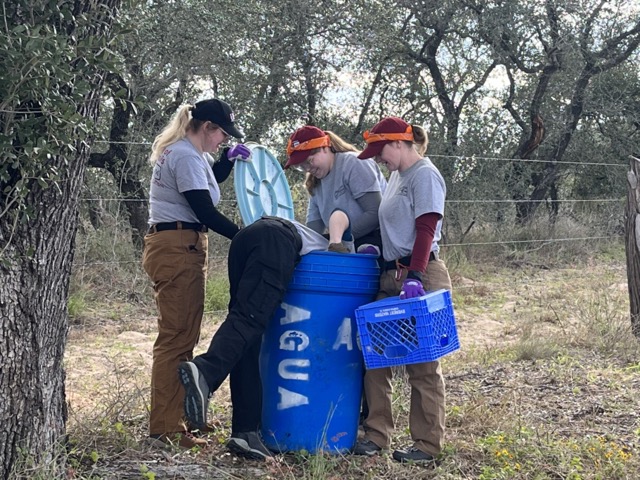
After a good night’s rest, we started day 3 at 7:30 a.m. Today was hotel waffle day, which is one of my favorite foods. We sat down for breakfast, had our vitamin C shots, and discussed more in depth our plans for the day. Our first activity was doing water stations with Eddie. We met up at the South Texas Human Rights Center. The South Texas Human Rights Center is adjacent to the Ed Rachal Memorial Library. Dr Latham explained the foundation has a focus on children, literacy and education. Across the street is the Brooks County Courthouse, which according to Dr. Latham is absolutely beautiful inside after its refurbushment, but unfortunately, we were not able to go inside today because it is closed on the weekends.
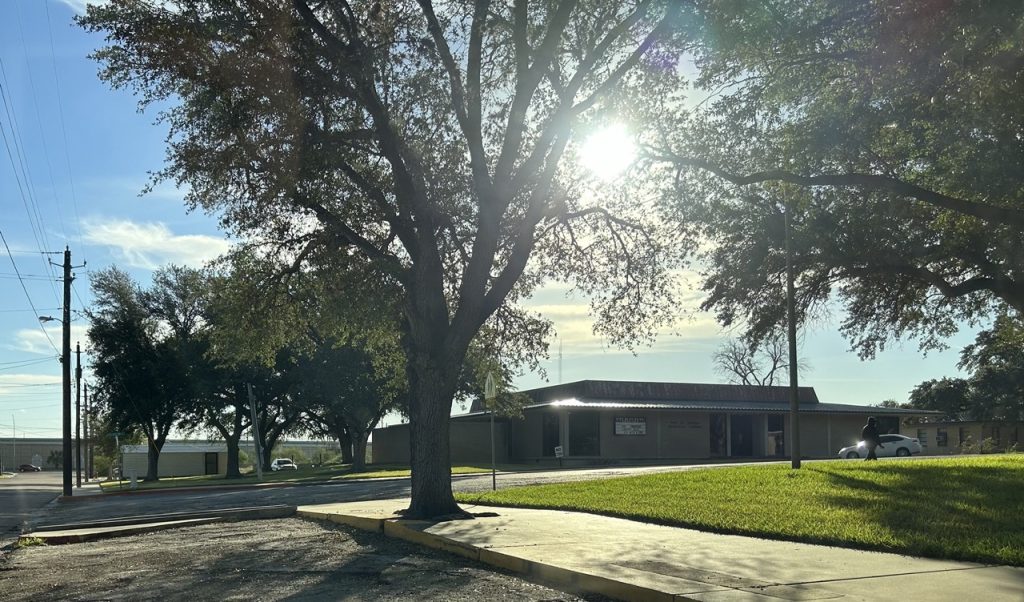
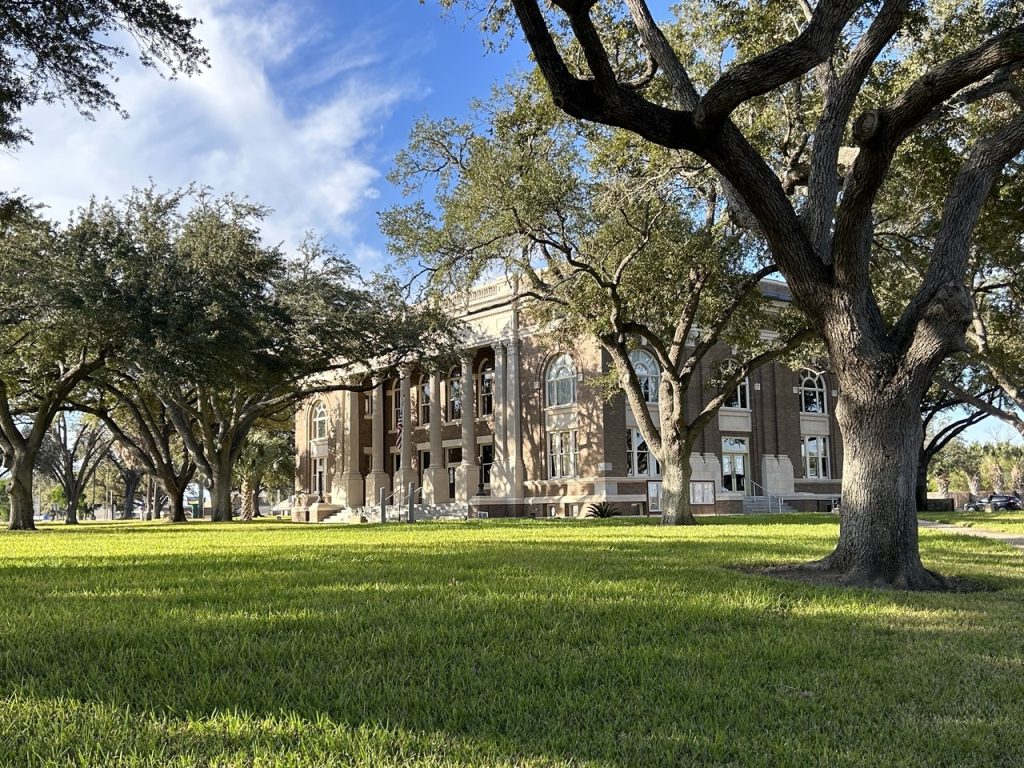
Eddie had loaded up his truck the day before with all our supplies for our water station route. We needed milk crates, gallon jugs of water, rope, metal stakes, and sharpies. After a quick stop at the hardware store and gas station, we headed out on our route. Fortunately, for part of our route I was able to ride in the truck with Eddie and chat with him. He explained a lot of his methodologies and reasons as to why he does what he does. He uses gallon jugs because they are easiest to carry and the local HEB orders them specifically for him to purchase. He started using blue barrels to store the water jugs because they stand out within the brush and the color symbolizes water. Part of our job today was to repair or reattach the lids with new rope. This was a team effort job, but we also had individual jobs as we continued to work and get into a groove. Clair and I split times riding with Eddie so whoever was with him was in charge of carrying the milk crates full of water jugs to the water station. Once our minivan pulled up behind the truck, everyone else would get out and start their jobs. Chastidy was in charge of writing the GPS coordinates of the water station on the inside lid along with the phone number of the South Texas Human Rights Center and 911. This allows anyone who arrives at the water station to know who to call if they want to ask for help. The remaining two of us would grab any empty jugs from the water station to place back in the truck to throw away. Once we figured out our jobs, it was really easy to work quickly and efficiently. A few of the water stations needed repairs so we had to place a new stake in the ground and tie the container to the stake.
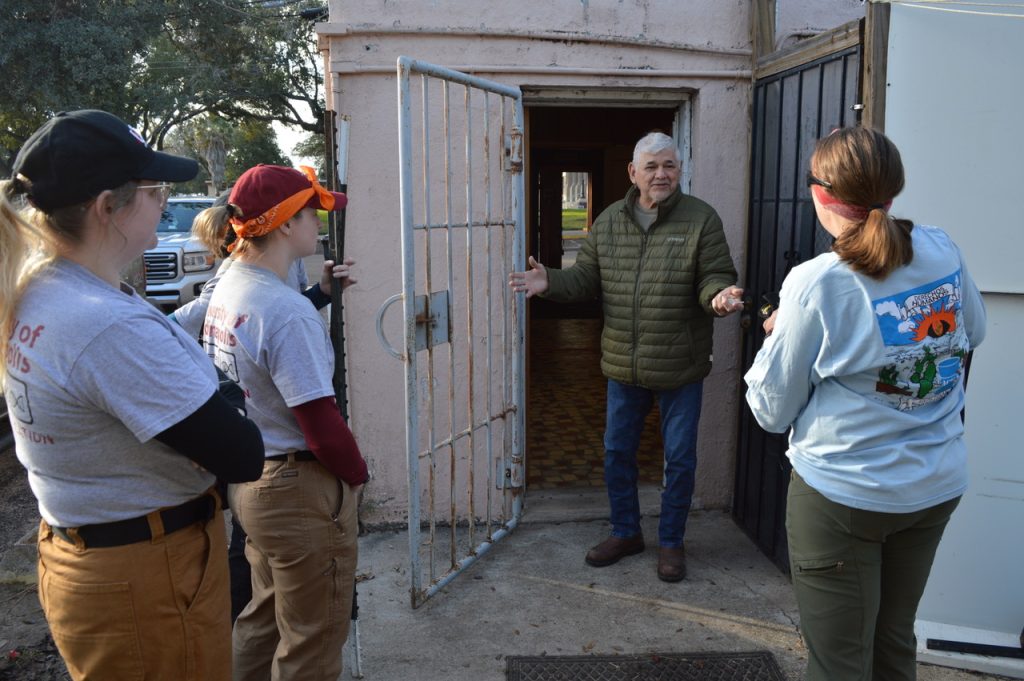


Recently, there has been more support from the community. At the first water station we reached, we opened it to see a case of water bottles placed inside. Eddie said it was very heartening to see support from the community and that hopefully others are starting to see the impact they can have on Brooks County. Eddie also explained how some ranch owners are willing to allow him to place water stations on their property. On a large and heavily trafficked ranch, Eddie has been able to place 30 water stations around the property with the permission of the owner.
We ran out of water after about 5 hours of work and took a short break for lunch. After our turkey sandwiches and little debbie snacks, Dr. Latham drove us to the Sacred Heart Cemetery to visit the sites they have excavated in previous trips. She gave us a brief history of the work they’ve done and had a chance to appreciate all they’ve accomplished. Sacred Heart is a beautiful cemetery where all of the family members are responsible for the upkeep of their loved one’s grave. They were all well kept with very little weeds and so many bright, colorful flowers. It is also tradition to place the loved ones’ favorite drink or snacks by their headstone. Many of them have lights so they are lit in the evenings and decorations for holidays. It was very clear to me that the deceased were deeply loved and missed by their family members.
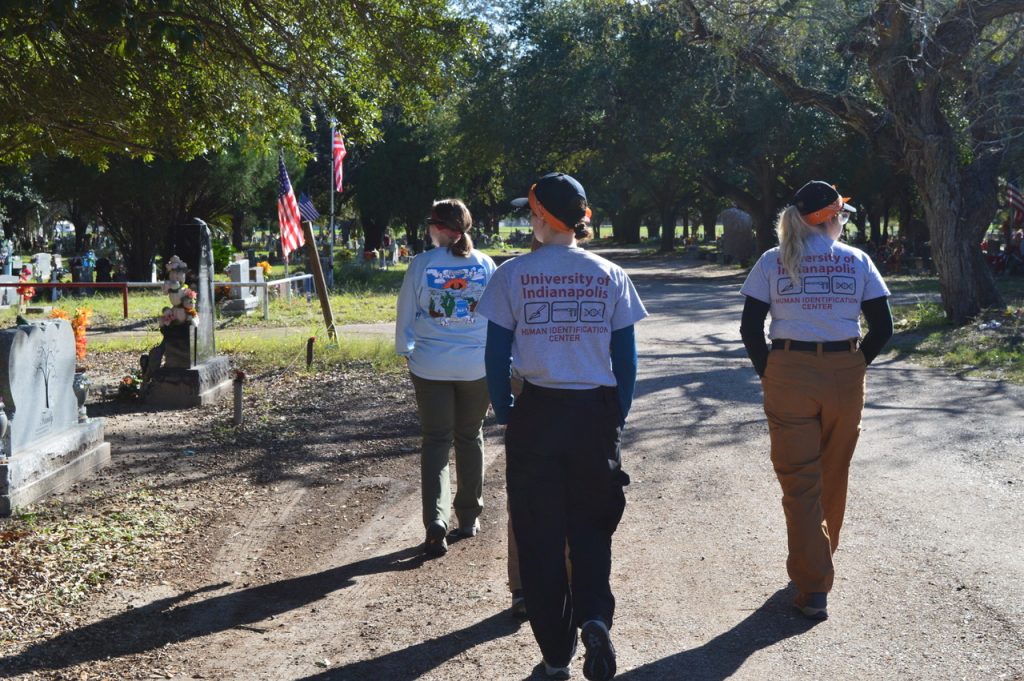
After visiting Sacred Heart, we drove to the Don Pedrito Jaramillo Shrine. It was a small little church where the walls were covered in little notes, prayers, and pictures. Don Pedrito was a community leader and folk healer, or curandero, in the 20th century. He traveled on healing missions throughout the Texas-Mexico borderlands visiting and healing sick people. Don Pedrito brought together aspects of Catholicism and traditional Spanish medicine that are still honored today. People even brought their crutches or walkers in hopes that Don Pedrito will help heal their ailments. It was overwhelming to see the pain and heartache the community places on these boards in hopes that their prayers will be answered.
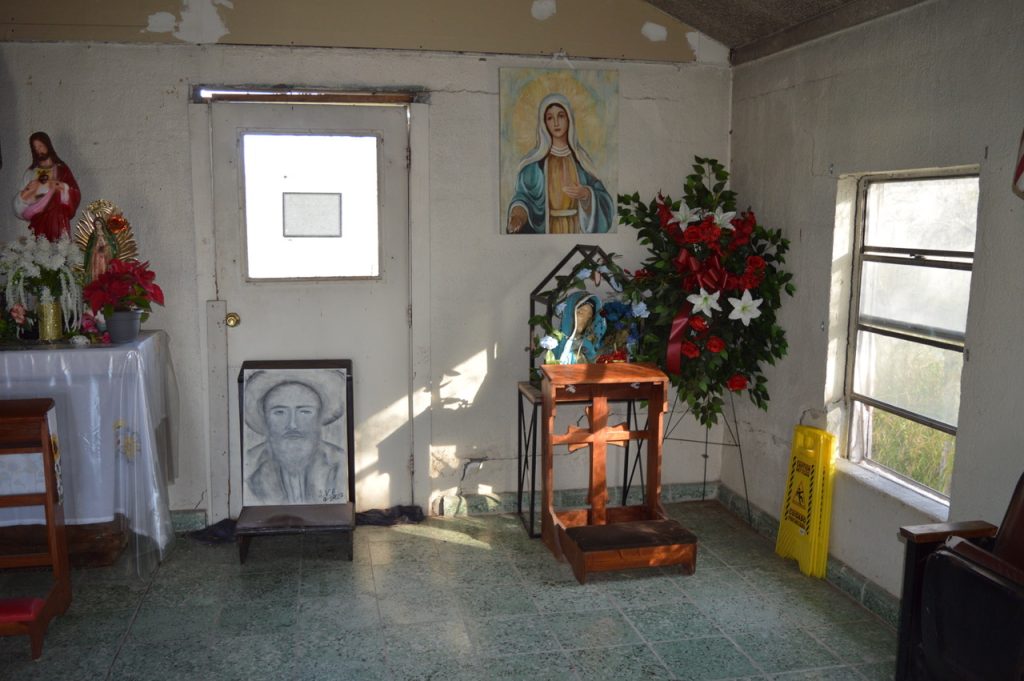
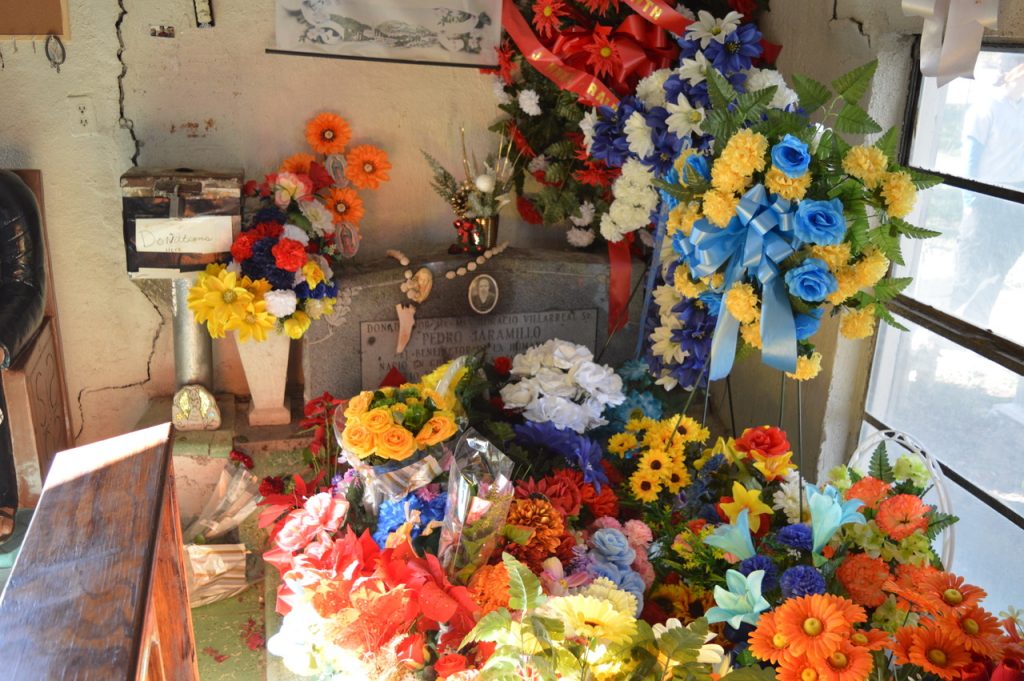
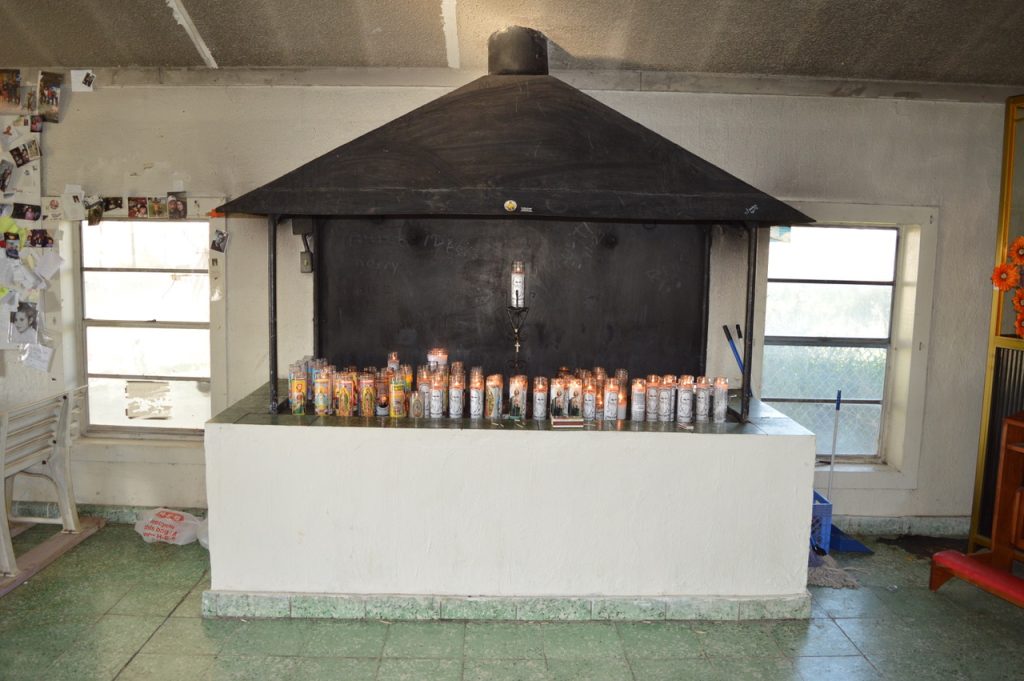
We ended our day with a quick dinner at Dairy Queen and then later met up with Don and Ray. Don was able to purchase an infra-red drone with some grant money. He taught us how to fly it and what he uses it for. The drone picks up infra-red signals which are heat signatures from living plants, animals, and people. Don uses the drone to look for potential decomposition sites. With the help of the drone, Don is able to send out teams to do searches and recoveries for those in distress.

Overall, this was a less physically exhausting day and more mentally and emotionally challenging. Understanding how the migrants are traveling, the conditions they suffer through, and learning more about Spanish culture and traditions has helped our team grow and learn to think deeper and differently about the migrant crisis. Our Day 3 was filled with so much learning and respect for the Brooks County community. I am looking forward to the next few days!